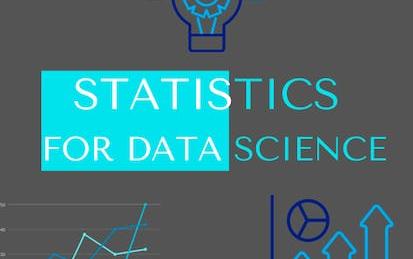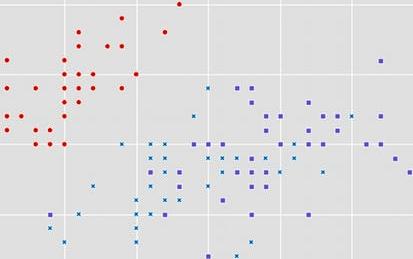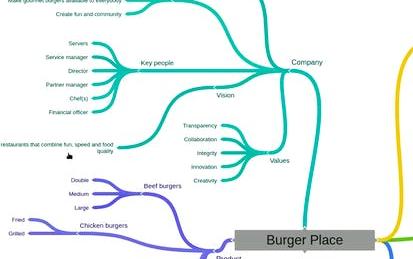

Our Courses

U.S. Taxation of International Transactions
This course analyzes the tax treatment, issues, planning techniques and underlying government policies involved in doing business internationally. The course incorporates concepts learned in all of the tax courses as they relate to the impact on cross-border outbound transactions (i.e., the taxation of US taxpayers doing business abroad).
-
Course by

-
 Self Paced
Self Paced
-
 14 hours
14 hours
-
 English
English

Organize an event with Canva
In this project, you will be able to organize an event on Canva, using the various graphic design tools offered by the platform. You will design amazing digital content and print products that will help you organize, plan and promote events of any kind successfully. The intended audience for this project is beginners, with little or no graphic design experience. It will enable persons and small businesses to organize any kind of event by creating astonishing graphic designs.
-
Course by

-
 Self Paced
Self Paced
-
 1 hour
1 hour
-
 English
English

Setting the Stage for Success: An Eye on Safety Culture and Teamwork (Patient Safety II)
Safety culture is a facet of organizational culture that captures attitudes, beliefs, perceptions, and values about safety. A culture of safety is essential in high reliability organizations and is a critical mechanism for the delivery of safe and high-quality care. It requires a strong commitment from leadership and staff. In this course, a safe culture is promoted through the use of identifying and reporting patient safety hazards, accountability and transparency, involvement with patients and families, and effective teamwork.
-
Course by

-
 Self Paced
Self Paced
-
 9 hours
9 hours
-
 English
English

Cross-Cultural Virtual Spaces and Teams
Airplanes gave us the ability to travel across oceans to visit international team members. But virtual spaces are now bringing us together in an instant. New rules have been written, and as work-from-home is on the rise, re-written, and they bring their own unique cross-cultural challenges. We’ll discuss communication differences unique to text-driven spaces like email and instant message as well as the evolving world of video conferencing.
-
Course by

-
 Self Paced
Self Paced
-
 11 hours
11 hours
-
 English
English

Deploy and Monitor in Google Cloud for Azure Professionals
This is the fourth course of a four-course series for cloud architects and engineers with existing Azure knowledge. It compares Google Cloud and Azure solutions and guides professionals on their use. This course focuses on deploying and monitoring applications in Google Cloud. The learners apply the knowledge of monitoring and application deployment process in Azure to explore the differences with Google Cloud. Learners get hands-on practice building and managing Google Cloud resources.
-
Course by

-
 Self Paced
Self Paced
-
 3 hours
3 hours
-
 English
English

Splunk Knowledge Manager 101
This course will introduce you to the basics of machine data, Splunk’s architecture, and how to navigate the Splunk Web interface. You will gain fundamental knowledge for defining, creating, and using fields in searches. You will learn about the different types of knowledge objects and how to create knowledge objects including event types, workflow actions, tags, aliases, search macros, and calculated fields.
-
Course by

-
 Self Paced
Self Paced
-
 3 hours
3 hours
-
 English
English

Statistics For Data Science
This is a hands-on project to give you an overview of how to use statistics in data science.
-
Course by

-
 Self Paced
Self Paced
-
 3 hours
3 hours
-
 English
English

Digital business - Grow on digital world
Digital-driven changes are both generic and specific. Most transformations apply to all industries, equally and without exception. But in some industries or places, digital transformations are singular and atypical. To be a player in the digital world, you will need to master both the transformations common to all industries and the transformations at work on certain verticals. Retail and the sharing economy are emblematic of markets where specific transformations are unfolding.
-
Course by

-
 Self Paced
Self Paced
-
 10 hours
10 hours
-
 English
English

API Testing with Karate Framework
Karate is an open-source framework for API Test automation that uses BDD style syntax, has a rich assertion library, built-in HTML reports. In this 2-hour long project-based course, you will learn -- 1. API testing basics and Karate framework 2. Sending GET, POST, PUT, PATCH and DELETE requests via Karate framework 3. Add assertions to write effective test scenarios via the Karate framework
-
Course by

-
 Self Paced
Self Paced
-
 4 hours
4 hours
-
 English
English

Principal Component Analysis with NumPy
Welcome to this 2 hour long project-based course on Principal Component Analysis with NumPy and Python. In this project, you will do all the machine learning without using any of the popular machine learning libraries such as scikit-learn and statsmodels. The aim of this project and is to implement all the machinery of the various learning algorithms yourself, so you have a deeper understanding of the fundamentals.
-
Course by

-
 Self Paced
Self Paced
-
 3 hours
3 hours
-
 English
English

Create Customizable Proposals in Qwilr
By the end of this project, you will be able to create customizable sales and marketing documents. We will use a hands on approach to develop proposals. Note: This course works best for learners who are based in the North America region. We’re currently working on providing the same experience in other regions.
-
Course by

-
 Self Paced
Self Paced
-
 2 hours
2 hours
-
 English
English

AWS AutoGluon for Machine Learning Classification
Hello everyone and welcome to this new hands-on project on ML classification with AWS AutoGluon. In this project, we will train several machine learning classifiers to detect and classify disease using a super powerful library known as AutoGluon. AutoGluon is the library behind Amazon Web Services (AWS) autopilot and it allows for quick prototyping of several powerful models using a few lines of code.
-
Course by

-
 Self Paced
Self Paced
-
 2 hours
2 hours
-
 English
English

Visual Perception and the Brain
Learners will be introduced to the problems that vision faces, using perception as a guide. The course will consider how what we see is generated by the visual system, what the central problem for vision is, and what visual perception indicates about how the brain works. The evidence will be drawn from neuroscience, psychology, the history of vision science and what philosophy has contributed. Although the discussions will be informed by visual system anatomy and physiology, the focus is on perception. We see the physical world in a strange way, and goal is to understand why.
-
Course by

-
 Self Paced
Self Paced
-
 14 hours
14 hours
-
 English
English

Flight mechanics - Lift and trajectory
In this course, you will understand the influence of the angle of attack and speed on the lift. Then we will focus on hazards and limitations, like stall, spiral dive, or flutter. You will understand why stall phenomenon and Mach number limit the maximum lift and altitude the airplane can achieve.
-
Course by

-
 Self Paced
Self Paced
-
 6 hours
6 hours
-
 English
English

Automation Techniques in RPA
The Automation Techniques in RPA course will provide knowledge about Extraction and its Techniques, Screen Scraping, Data Scraping and PDF Extraction. In the later part of the course, you will gain knowledge about Workbook, Excel and Email Automation in Studio. You will also learn about activities for workbooks and excel automation along with Email protocols and related activities. Building on each concept, there will be demonstration videos that will explain these operations and methods.
-
Course by

-
 Self Paced
Self Paced
-
 10 hours
10 hours
-
 English
English

Learn to Teach Java: Sequences, Primitive Types and Using Objects
Get started with the basics of Java, and prepare to teach others using the free, online interactive CS Awesome textbook. In this course for teachers we'll guide you both in learning Java concepts and skills but also in how to effectively teach those to your students. This course will support you in teaching the Advanced Placement Computer Science A course or a similar introductory university-level programming course. We'll begin with simple instruction sequences, primitive types, and using objects, as covered in the APCS A Units 1 and 2.
-
Course by

-
 Self Paced
Self Paced
-
 13 hours
13 hours
-
 English
English

Reinforcement Learning for Trading Strategies
In the final course from the Machine Learning for Trading specialization, you will be introduced to reinforcement learning (RL) and the benefits of using reinforcement learning in trading strategies. You will learn how RL has been integrated with neural networks and review LSTMs and how they can be applied to time series data.
-
Course by

-
 Self Paced
Self Paced
-
 12 hours
12 hours
-
 English
English

Create a business mind map with Coggle
In this 1-hour long project-based course, you will learn how to build a business plan mind map using Coggle. You will create branches with keywords stemming from a central idea, analyze product and market fit, services, company structure and summarize an executive overview. You will learn how to use signifiers to organize information and establish hierarchies. Finally you will share, comment and manage revision history for solid collaboration. Note: This course works best for learners who are based in the North America region.
-
Course by

-
 Self Paced
Self Paced
-
 3 hours
3 hours
-
 English
English

Management
This course will introduce you to cybersecurity leadership and management. Drawing on industry standards, frameworks and models, you will explore the key objective elements of cybersecurity leadership. Cybersecurity leadership and management are two high-level competences required to successfully administer a cybersecurity division that produces the essential level of security, trust and stability (STS) demanded by an organization.
-
Course by

-
 Self Paced
Self Paced
-
 6 hours
6 hours
-
 English
English

Decisions, Decisions: Dashboards and Reports
You’re almost there! This is the third and final course in the Google Business Intelligence Certificate. In this course, you’ll apply your understanding of stakeholder needs, plan and create BI visuals, and design reporting tools, including dashboards.
-
Course by

-
 Self Paced
Self Paced
-
 27 hours
27 hours
-
 English
English

Street Experiments for Sustainable and Resilient cities
Our streetscape, despite its feeling of permanence in our environment, is an ideal venue for experimentation. We have come to accept traffic movement as the default function for the street. Therefore, we need to rethink its design and space distribution, go back to its original and basic function and see them as public spaces - Transform them into places for social activities, where conversations can take place and places where kids can play. This course shows you examples of remarkable changes and gives you a toolbox for implementing and evaluating street experiments yourself.
-
Course by

-
 Self Paced
Self Paced
-
 12 hours
12 hours
-
 English
English

Diode - pn Junction and Metal Semiconductor Contact
This course can also be taken for academic credit as ECEA 5631, part of CU Boulder’s Master of Science in Electrical Engineering degree. This course presents in-depth discussion and analysis of pn junction and metal-semiconductor contacts including equilibrium behavior, current and capacitance responses under bias, breakdown, non-rectifying behavior, and surface effect. You'll work through sophisticated analysis and application to electronic devices. At the end of this course learners will be able to: 1.
-
Course by

-
 Self Paced
Self Paced
-
 16 hours
16 hours
-
 English
English

Cryptography and Information Theory
Welcome to Cryptography and Information Theory! This course combines cryptography (the techniques for protecting information from unauthorized access) and information theory (the study of information coding and transfer). More specifically, the course studies cryptography from the information-theoretical perspectives and discuss the concepts such as entropy and the attacker knowledge capabilities, e.g., Kerckhoff's Principle.
-
Course by

-
 Self Paced
Self Paced
-
 8 hours
8 hours
-
 English
English

Designing the Future of Work
The workplace of tomorrow is an uncertain place. We live in a rapidly changing world, and design innovations such as artificial intelligence (AI), robotics, and big data are rapidly changing the fundamental nature of how we live and work. As these technologies continue to evolve at an exponential rate - it is becoming critical to understand their impact on contemporary work practices, and for businesses and employees to understand how to design a secure future amidst this disruption. What new, disruptive technologies are on the horizon? How will jobs change?
-
Course by

-
 Self Paced
Self Paced
-
 13 hours
13 hours
-
 English
English

Cloud Technologies & Services
The Cloud Technology course is intended to level set learners on key products and technologies - such as compute, storage and networking that make up the "Cloud". In addition, learners will learn basic concepts of other technologies like containers, media and telemetry. The Cloud Services module will drill more deeply into the services that are made available in the cloud environment. The student completing this module will be able to describe the components of a cloud service including VPC, networking and cloud security.
-
Course by

-
 Self Paced
Self Paced
-
 4 hours
4 hours
-
 English
English



